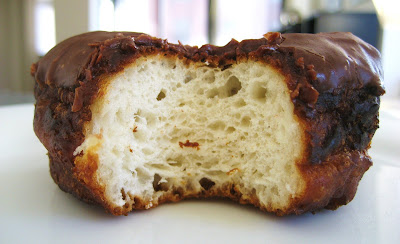
It’s springtime, although you wouldn’t know it from the weather here in New York city. It is supposed to be 41F tonight, which is only 9 degrees above freezing! Yesterday I was caught in a rainstorm, and was so wet that I had to slosh into Duane Reade to buy new socks and a roll of paper towel to dry my pants and shoes. As you can imagine, New Yorkers are complaining loudly about this state of affairs.
I find cooking to be a perfect way to transcend gloomy weather. This week I created a vernal lasagna that embodies the coming of spring with hints of green (artichoke, spinach and peas) peeking out from a snowy mass of noodles, ricotta and mozzarella. This lasagna is inspired by a recipe from Bon Appétit, and is a contrast to the autumnal heartiness of most red meat/red sauce versions. You can read about the “dirty” history of the word lasagna on my recent post for Turkey Lasagna al Forno.
Ingredients
1 tablespoon olive oil
3 cloves garlic, minced
1 onion, chopped
8 ounces canned (drained) or frozen artichoke hearts (thawed), coarsely chopped
1/4 cup (1 package) fresh basil leaves, chopped
1 cup whipping cream
1 15-ounce container low-fat ricotta cheese
1/2 pound frozen petite peas, thawed
1 10-ounce package frozen chopped spinach, thawed and drained
1/2 cup grated Parmesan cheese
1 large egg
1/2 teaspoon salt
1/2 cup pine nuts (optional)
1/2 cup sun dried tomatoes, chopped plus 4 extra (optional)
6 no-boil lasagna noodles, dipped in water
1/2 pound coarsely grated mozzarella or mozzarella cheese



Directions
1. Preheat oven to 375°F.
2. In large skillet, heat oil over medium heat. Sauté garlic until fragrant, and then sauté onions and 2 minutes. Add in artichokes and sauté for 2 more minutes [first picture above]. Turn off heat and stir in 1/2 cup cream and basil.
3. In a blender puree 1/2 cup cream, ricotta, 1/2 peas, spinach, Parmesan, egg and salt. Mix in remaining peas, pine nuts and sun-dried tomatoes [second picture above].
4. Grease an 8 x 11 glass baking dish with olive oil. Spread 1/2 cup ricotta mixture, and layer with 2 noodles.
5. Cover with 1/2 of artichoke mixture, 1 cup ricotta mixture and 1 cup mozzarella.
6. Repeat with 2 noodles, rest of artichoke mixture and 1 cup mozzarella.
7. Top with last noodles, remaining ricotta mixture and 2 cups mozzarella cheese.
8. Slice up 4 sun dried tomatoes and use to garnish the top of the lasagna [third picture above].
9. Cover tightly with foil and bake lasagna for 40-45 minutes. Uncover and continue baking until noodles are tender and lasagna is hot and bubbly. This will take between 8-12 minutes.
10. Allow lasagna to stand for 15 minutes before serving.












 Directions
Directions

